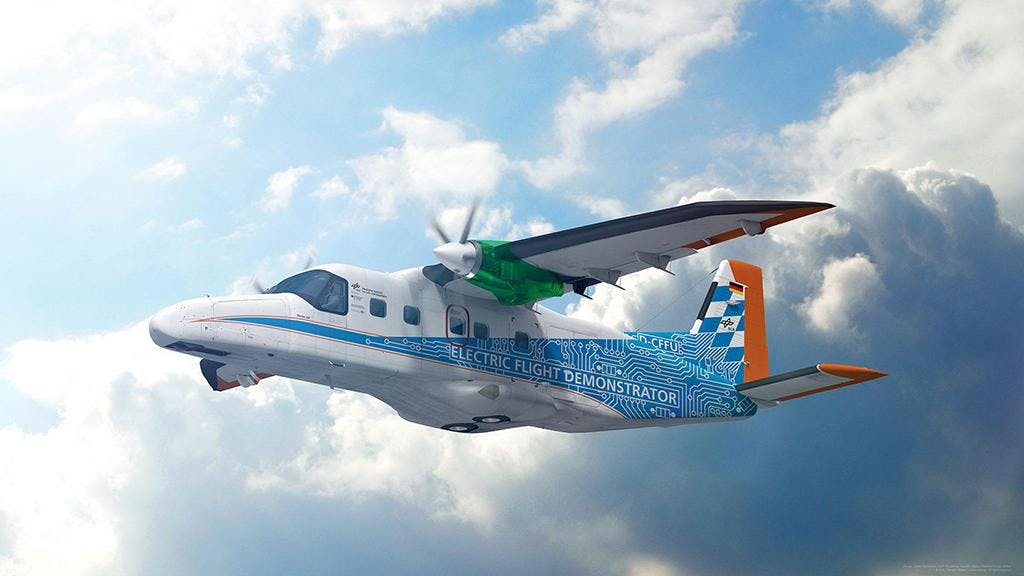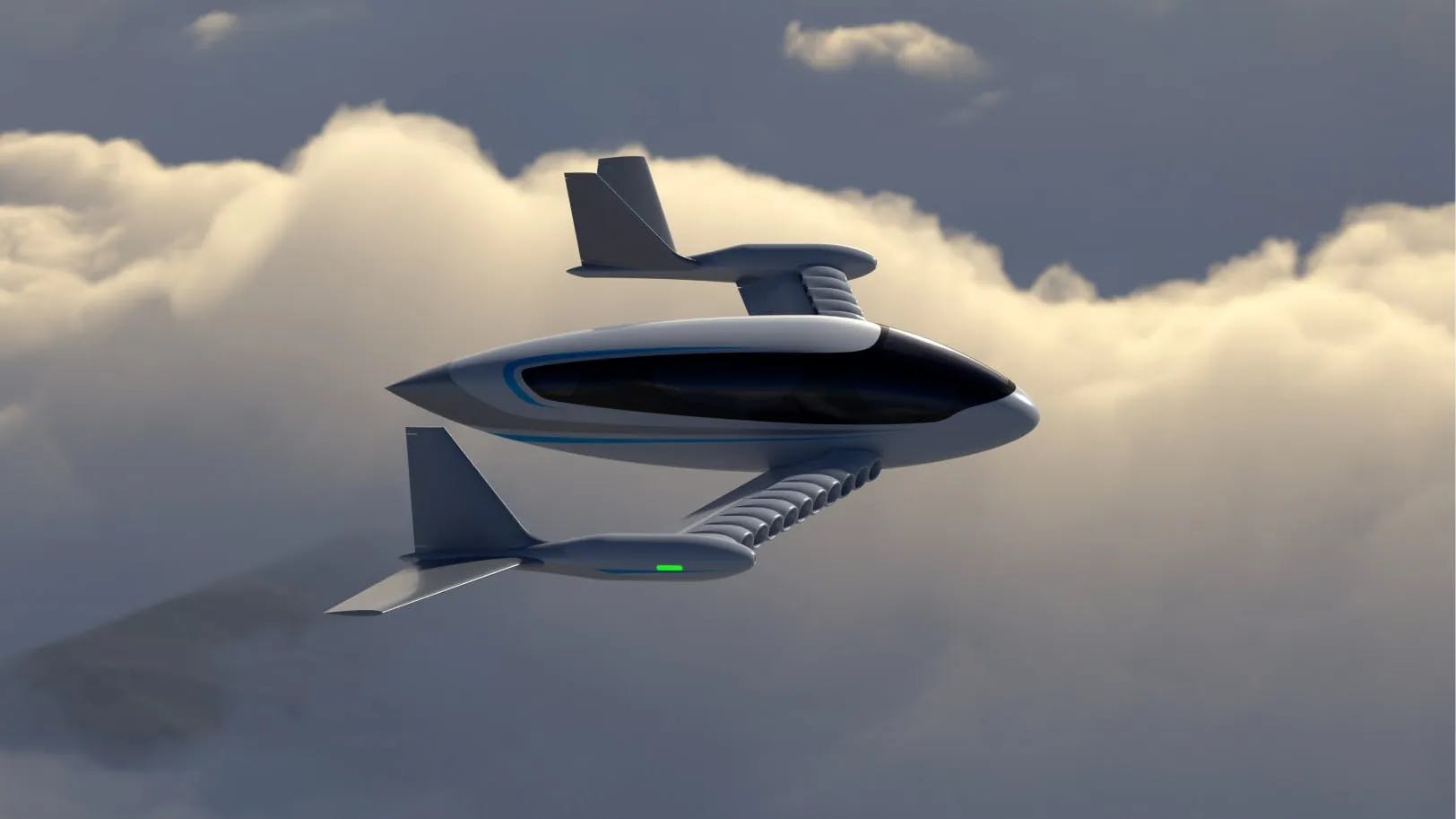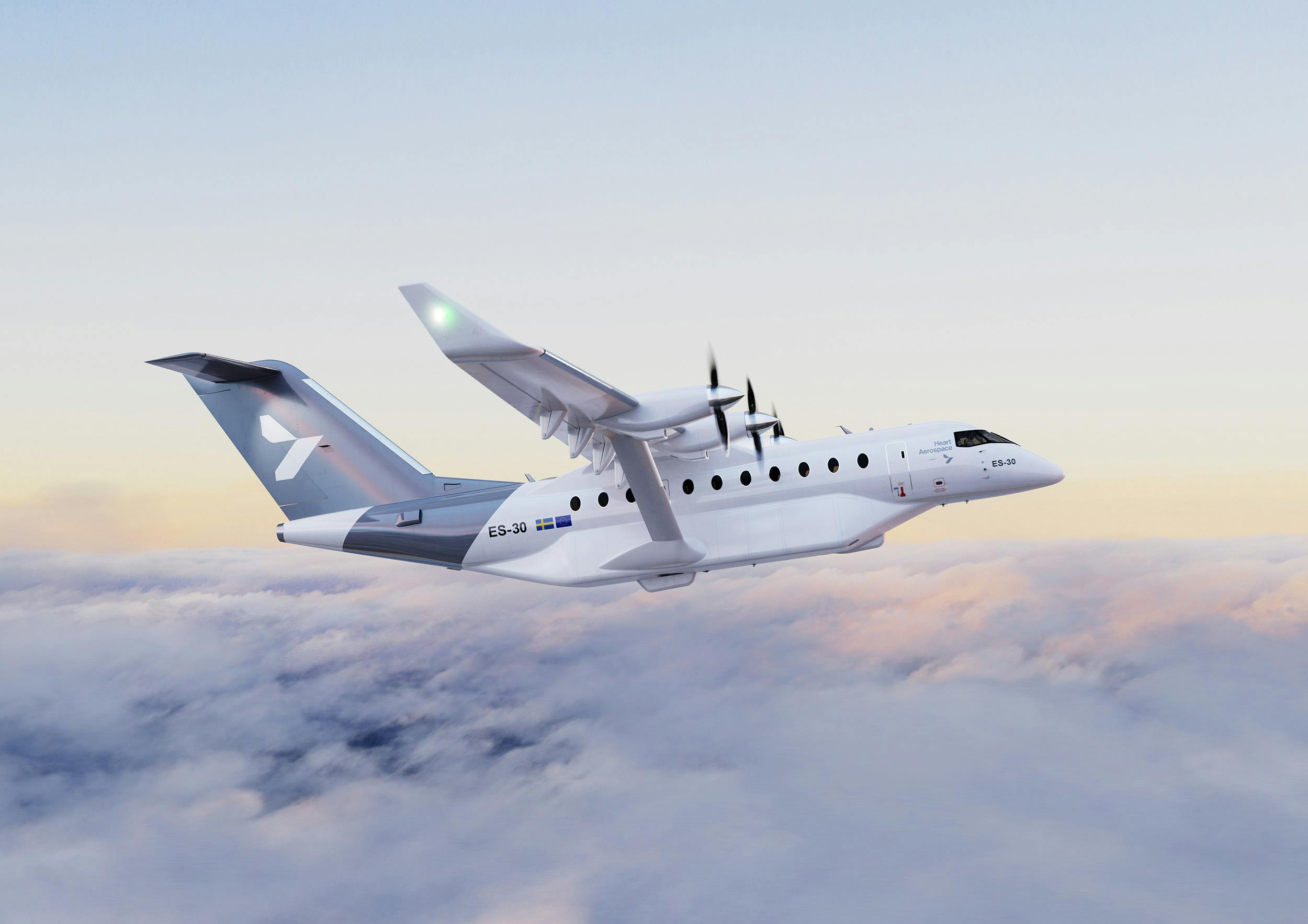Are ducted fans or electric propeller-driven aircraft ready to replace regional jets?

Blog
Ask anyone who flies regularly on regional commercial aircraft and they’ll tell you it pretty much sucks. The smaller, narrower jets used are often cramped, with minimal overhead space for normal carry-on luggage. Seats are often narrower, legroom is tight, and amenities are few. Turboprops (which use jet turbine engines driving conventional propellers for thrust) are even worse, with all the downsides of the small jets, but with the addition of more noise and vibration, and slower cruising speeds.
However, several startup companies are developing fully electric commuter aircraft they hope will take over these regional flights within the next 5 to 10 years. Some of these designs use variations of ducted fan engines, some use electric-driven propellers, and some use a hybrid/combination of internal combustion engine (ICE) drive and electric drive.
But how ready is this market for a switch to all-electric propulsion? Let’s look at some of the front-runners and see if we can determine which way the prevailing technological wind is blowing.
What are ducted fans or “electric jet engines”?
Ducted fans, sometimes colloquially called “electric jet engines” are essentially large axial fans spinning within an outer housing or cowl, the entire assembly somewhat resembling a modern turbofan jet engine… but without the jet engine in the center providing the power for the fan. In a ducted fan, an electric motor drives the fan and, of course, doesn’t provide the thrust (or carbon emissions, or noise) of a jet engine. (At least until someone figures out a scaled-up electric plasma-jet engine that works.)
Ducted fan engines have been used for decades in hobbyist applications such as remote-control aircraft, and are among the most popular choices for propulsion among the various eVTOL or urban air mobility designs. There are now ducted fans specifically developed for eVTOL use.
Have ducted-fan-powered passenger aircraft actually flown?
Not in a non-experimental setting, no. Several eVTOL designs have flown demo flights, including the first (pilotless!) passenger flight of a 2-seat eVTOL in Japan in February 2023. However, that one utilized an 8-propeller “drone” style design where the electric motors drive large, horizontally oriented propellers on booms or outriggers, rather than ducted fans.
AirBus developed and flight-demoed a ducted-fan (they called it E-Fan) powered aircraft as early as 2014, but to our knowledge, never carried passengers. The two-seat experimental airplane, according to AirBus, had a takeoff speed of 110 kph (68.3 mph), cruise speed of 160 kph (99.4 mph) and maximum speed of 220 kph (136.7 mph). Its endurance ranged between 45 minutes and one hour.
Several electric regional air startups have revealed compelling designs for ducted-fan-powered aircraft, including Whisper Aero’s Whisper Jet concept. According to FutureFlight, “Whisper engineered a ducted fan with a very high blade count and low tip speed. When rotating at a high enough speed, this puts the blade pass frequency in the ultrasonic range. Blade pass frequency, which is calculated by multiplying the number of fan blades by the rotational frequency of the rotor, is responsible for most of the noise created by fans and propellers. By pushing those tones into the ultrasonic range, the sound produced by the spinning of the blades is barely audible to the human ear, and much of it is dampened by the atmosphere. Generally speaking, fans that spin at higher rotational speeds… tend to have higher blade tip speeds [creating] more aerodynamic noise over a broader range of frequencies. Whisper has managed to achieve a low tip [speed] combined with a high rpm by reducing the length of the blades.”

Image from Whisper Aero.
However, the Whisper Jet, though intriguing, is still only a concept. FutureFlight reports, “the company hopes its Whisper Jet concept will attract the attention of aircraft designers who may want to integrate its propulsion system into their new aircraft designs, particularly those intended for regional air mobility.”
Regional/urban air mobility (UAM) is technically a different concept from today’s regional commuter routes flown by jets and turboprops. Proposed UAM aircraft generally have a maximum passenger capacity from between 4 and 9 people, and a larger emphasis on VTOL (vertical takeoff and landing) designs that don’t need traditional airport runways.
However, today’s most-advanced batteries and the latest ducted fans are still inadequate to power even a 7-seat “puddle jumper” for many of the required distances of popular routes, let alone the larger 70ish-passenger regional aircraft.

Electric propeller-driven aircraft are closer to achieving regional use… but aren’t there yet
United Airlines, Air Canada, and JSX have all ordered fully electric aircraft from Heart Aerospace, which is developing 19- and 30-seat commuter-type electric planes and is definitely one of the frontrunners in this market. Target dates for opening operations of regional routes range from 2028 to “the end of the decade.” However, rather than ducted fans, these aircraft use electric motors driving conventional propellers, with engine nacelles resembling turboprops mounted to the leading edges of the wings. As such, they are still limited by the same factors that limit today’s turboprops, but with poorer performance and range, as a result of the discrepancy in energy density between ICE jet fuel and even the most advanced lithium-ion batteries in use today.
As an example of this, ahem… weighty problem, Eviation has test-flown a 9-seat prototype electric airplane which they say will have a 250 nautical mile range, a 260-knot maximum speed, and a 2,500-lb payload. But as GreenBiz points out, “the [current] battery compartment wraps around the body of the plane — 8,000 pounds of battery weight alone — almost half the airplane’s maximum takeoff weight of 18,400 lbs.” As you add more passengers, luggage, and seats, you add the requirement for more power, and thus more batteries, which adds even more weight. Soon you end up with a heavy, bloated design that can barely get out of its own way, let alone fly you and 40 of your closest friends to the global warming summit in the Turks and Caicos over the weekend.
Several firms have adopted a potentially more realistic approach, eschewing fully electric ducted fan or full-electric prop designs for hybrid-powered propeller-driven aircraft for the regional commercial aircraft market. For example, Electric Aviation Group has “designed a 70+ seat Hybrid Electric Regional Aircraft (HERA) which is a technically and commercially viable point of entry into the nascent sustainable mass air transport market… available for delivery in 2028.” EAG’s design has four engines; 2 conventional ICE turboprop engines mounted on the inboard sides of the wings, with 2 of what they call “electric propulsors” on the outboard nacelles. They say this will allow cheap and easy retrofitting of full-electric setup as technology improves.
And that’s the key roadblock for most of these regional all-electric flight designs. Pretty much everyone assumes that battery technology and/or “propulsor” or ducted fan “electric jet” engines will drastically improve in performance within the next 6 or 8 years, making practical mass electric flight possible for the first time. Perhaps that will be the case. EU 2050 Flightpath targets certainly are optimistic, specifying a 75% reduction in CO2 emissions per passenger kilometer, a 90% reduction in nitrogen oxide emissions, and a 65% reduction in perceived noise. While the EU certainly has demonstrated its philosophy to legislate now and innovate later in attempting to curb carbon emissions, history has shown that realistically meeting targeted reductions in carbon emissions and improvements in “clean” transportation performance has required repeatedly moving the targets to align with what is actually practicable.
We expect that full-electric, 70+ passenger regional flights will actually be possible at some point in the future. Maybe even within the next 6 to 10 years. However, that’s a big ask when current power requirements and battery power-to-weight ratios are not there yet. Air taxis and eVTOLs have already shown that all-electric, personal, local flight is possible. Maybe up to 4-6 people at a time, assuming they pack light and don’t have an overweight emotional support peacock in tow. However, flying 70 or 80 people with luggage even the 181 miles from Miami to the Bahamas is a much tougher technical challenge.
As GreenBiz says, “Sustainable aviation will need many technologies to fully decarbonize, including hydrogen, electric and sustainable aviation fuel. Most of these are still prohibitively expensive, don’t have enough scale or volume and aren’t ready for long-haul flights.” From what we’ve seen so far, when it comes to transporting 70+ or even 40 passengers, sustainable aviation isn’t quite ready for short-haul flights yet, either.
– By Jeff Davis, Intergalactic Scribe
Sources:
https://www.electricaviationgroup.com/electric-flight/
https://www.aerospace-technology.com/projects/e-fan-electric-aircraft/
https://www.flyingmag.com/aam-industry-gets-a-new-electric-ducted-fan/
https://www.greenbiz.com/article/alice-major-moment-sustainable-aviation
https://www.greenbiz.com/article/first-frontier-electric-aviation-short-haul-flights